PURPLE CHILLIE CAYENNE PEPPER 10 SEEDS FOR SALE ONLINE HERE AUSTRALIA.$4 PER 10 SEEDS.. Add $4 pack/post to your order.

The chili pepper is well-known for its ability to provide a spicy kick to everything from soups to salsas. Although it’s most famous for its culinary uses, the chili pepper also boasts a long list of health benefits as well.

Not only do these spicy superfoods contain a whole host of antioxidants, but chili peppers also have been shown to improve digestive health, reduce blood pressure levels and bump up fat-burning.
Ready to learn more? Check out this comprehensive guide to chillie peppers for the answers to all your burning questions.

While these chillies are tapered and slim like the typical cayenne pepper, purple cayenne tend to be a little smaller with a slightly bigger bite. They won’t be hotter than the hottest possible cayenne, but their floor is not as low as the regular cayenne either, starting at 40,000 SHU. The size of these cayenne make them a terrific ornamental pepper option, and they are an excellent choice for container gardening.

What Is Chillie Pepper?
Also known by their scientific name, Capsicum annuum, chili peppers are a type of nightshade vegetable native to North and South America. There are many different chili pepper plant varieties, each of which differs in size, shape and spiciness.

Bell peppers, for example, are typically sweet and range in color from red to green, yellow or orange. Cayenne peppers, on the other hand, are much hotter peppers that are long, skinny and red.
Chili peppers are considered a staple ingredient in cuisines around the globe. In fact, chili peppers are often used to add a punch of flavor and heat to Vietnamese, Mexican, Indian, Thai, Arabic and Spanish dishes, among others.
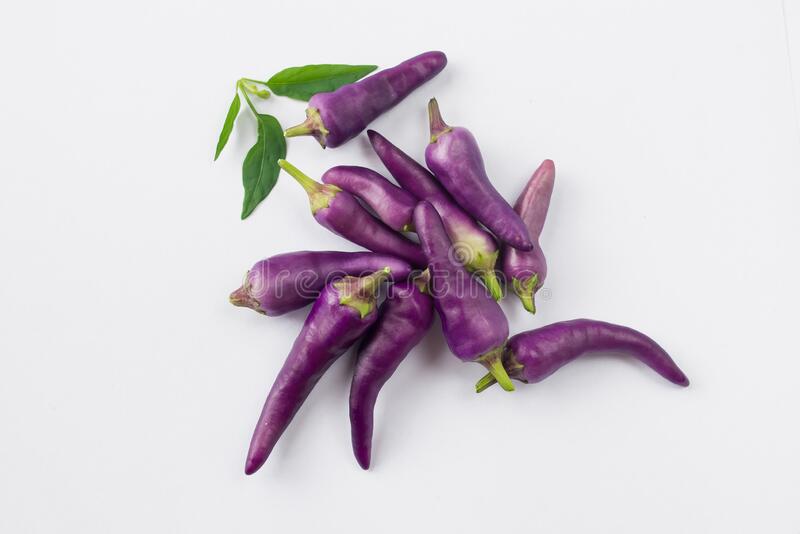
Throughout history, chili peppers have also been used to treat a variety of different ailments. The Mayans, for instance, used chili peppers to treat respiratory conditions like asthma and coughing, while the Aztecs used peppers to provide relief from toothaches.

In other areas, chili peppers have also been used to treat headaches, stiff joints, heart problems and more.
Types/Varieties
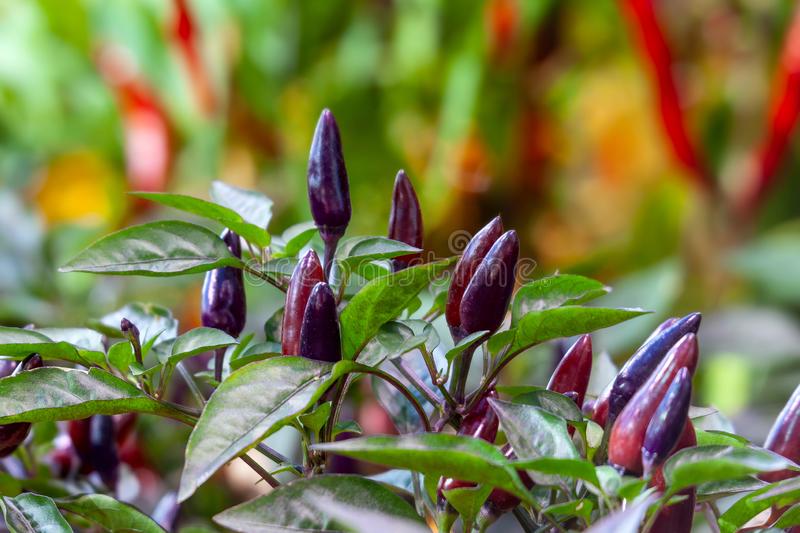
There are many different types of chili peppers available, ranging from mild chili peppers, such as sweet bell peppers, to Carolina Reaper peppers, which have been hailed as the world’s hottest chili pepper.
The heat of these peppers is categorized by the chili pepper Scoville scale, which measures and records the spiciness of peppers in Scoville Heat Units (SHU) based on their content of capsaicinoids.

In addition to ranging in terms of heat, they also differ based on color and size.
The Aji Cristal pepper, for example, is a small chili pepper notable for its vibrant red color. Conversely, the Holy Mole pepper is a type of green chillie pepper that can grow up to nine inches long.
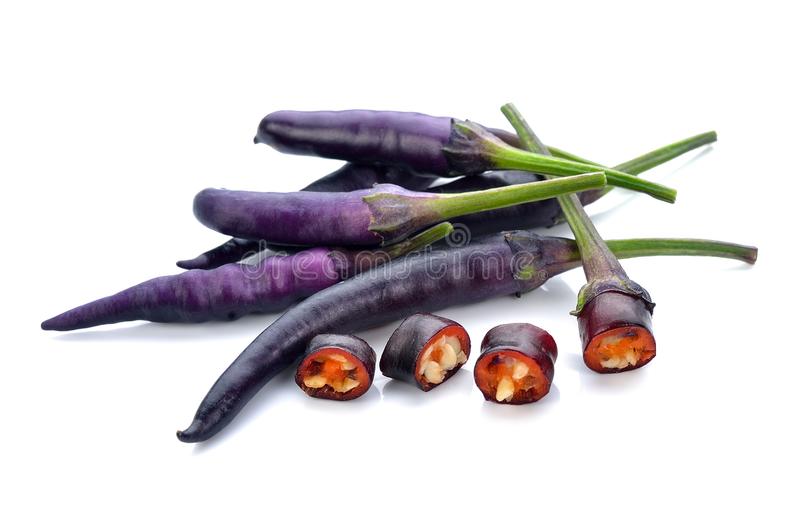
Here are some of the most common types of chillie peppers:
- Bell pepper
- Poblano pepper
- Aleppo pepper
- Holy Mole pepper
- Cayenne pepper
- Chiltepin pepper
- Banana pepper
- Jalapeño pepper
- Aji Cristal pepper
- Ghost chili pepper
- Anaheim chili pepper
- Serrano pepper
- Thai chili pepper
Nutrition Facts/Compounds
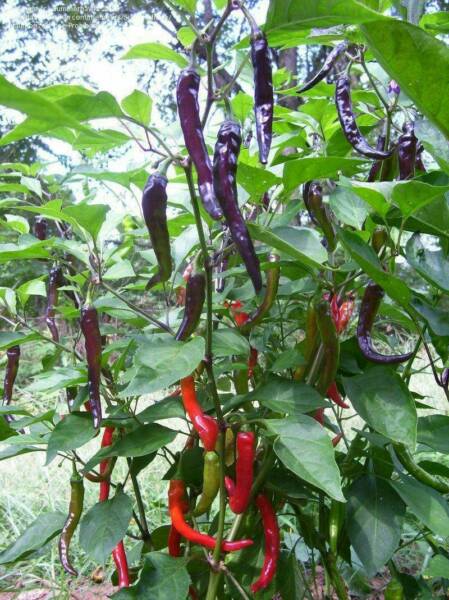
Although the specific nutrients and compounds found in chili peppers can vary based on the different pepper varieties, most are rich in a range of vitamins, minerals and antioxidants. In particular, chili peppers are high in vitamin C, folate and vitamin A, along with a host of other important micronutrients.
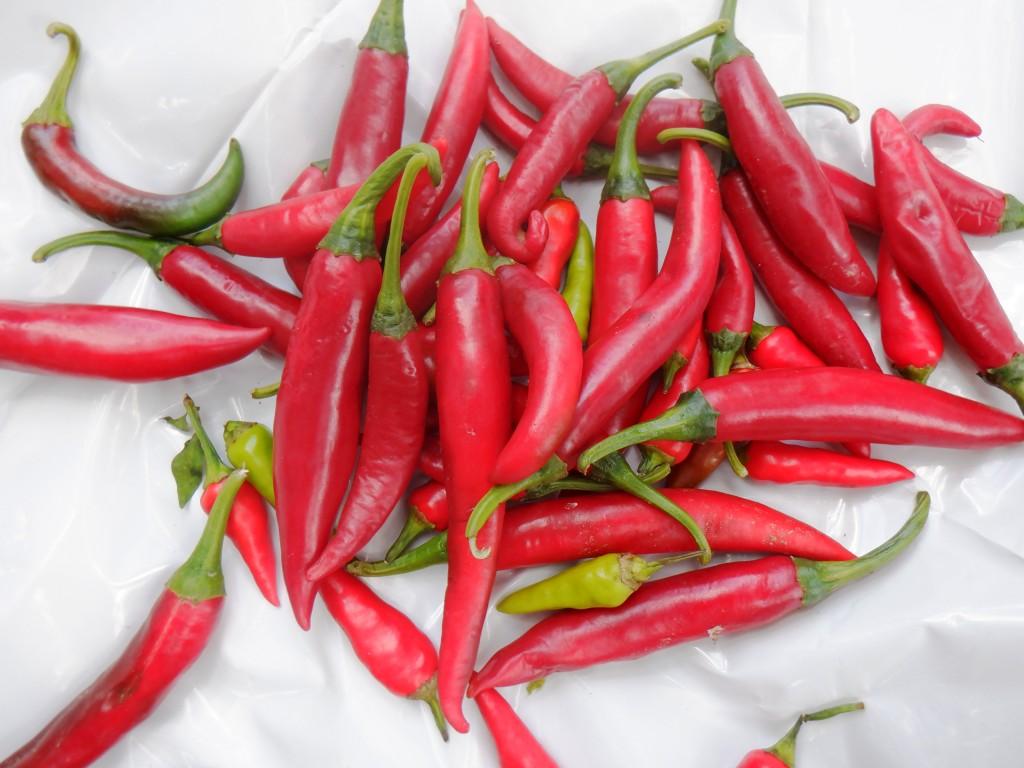
One half-cup of red chili pepper contains the following nutrients:
- 30 calories
- 6.5 grams carbohydrates
- 1.5 grams protein
- 0.5 grams fat
- 1 gram dietary fiber
- 108 milligrams vitamin C (180 percent DV)
- 0.4 milligrams folate (19 percent DV)
- 714 International Units vitamin A (14 percent DV)
- 10.5 micrograms vitamin K (13 percent DV)
- 241 milligrams potassium (7 percent DV)
- 0.1 milligrams manganese (7 percent DV)
- 0.1 milligrams copper (5 percent DV)
- 0.9 milligrams niacin (5 percent DV)
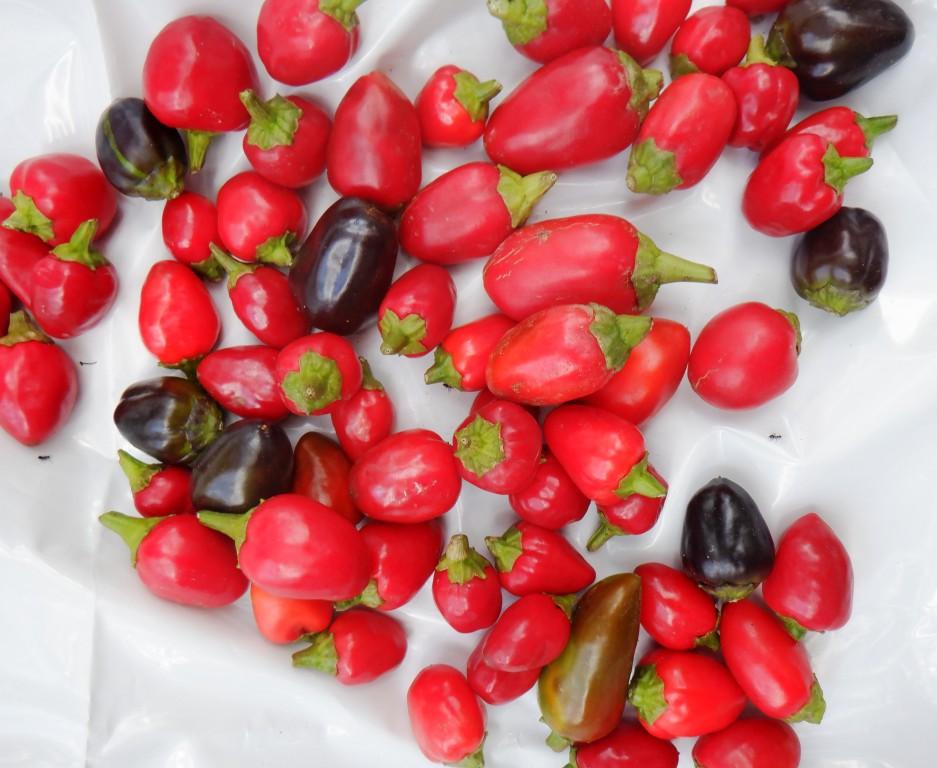
Hot peppers are also rich in other beneficial compounds, including antioxidants, such as capsaicin, which is responsible for providing peppers with their signature spicy flavor. Peppers also contain other antioxidants and carotenoids, such as:
- Lutein
- Antheraxanthin
- Capsanthin
- Ferulic acid
- Capsorubin
- Beta-cryptoxanthin
- Zeaxanthin
- Beta-carotene
Health Benefits
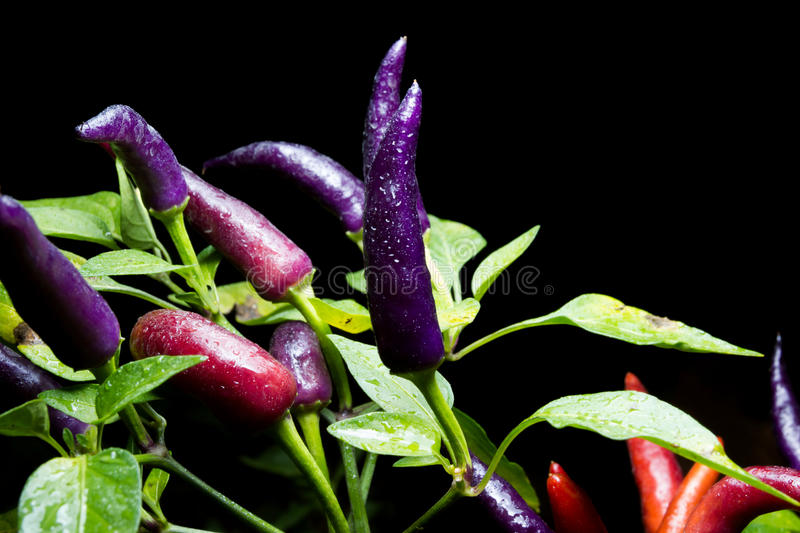
Rich in a variety of vitamins, minerals and health-promoting compounds, it’s no surprise that chili peppers have been linked to a long list of potential health benefits.
1. Helps Boost Fat-Burning

Chili peppers have been extensively studied for their ability to ramp up metabolism and boost fat-burning, thanks mostly to their content of capsaicin. Interestingly enough, capsaicin has been shown to increase energy expenditure, which is the amount of calories that your body burns throughout the day.
It may also stimulate the breakdown of fat stored in the body so it can be converted into fuel.
Not only that, but chili peppers can also promote weight loss by decreasing hunger and appetite. One study in International Journal of Obesity even found that consuming capsaicin before meals increased satiety and reduced subsequent intake of fat and calories.
2. Can Provide Pain Relief

Multiple studies suggest that chili peppers could potentially help provide relief from pain. This is because capsaicin, the main compound found in chili peppers, can bind to pain receptors in the body and decrease the perception of pain.
Capsaicin may also offer relief from other forms of pain, including heartburn and acid reflux. A study published in New England Journal of Medicine reported that administering red peppers to people with indigestion reduced heartburn-related pain over a five-week period.
3. Rich in Antioxidants

Chili peppers are loaded with antioxidants, which are compounds that can help neutralize free radicals and protect against chronic disease. In particular, chili peppers are especially high in vitamin A and vitamin C, two important micronutrients that double as antioxidants in the body.
Chili peppers are also a great source of other antioxidants, such as capsanthin, lutein, ferulic acid and zeaxanthin.
4. Helps Reduce Blood Pressure

Promising research suggests that chili peppers could potentially help reduce blood pressure levels to help keep your heart in tip-top condition. This could be due to the ability of capsaicin to increase levels of insulin-like growth factor 1 (IGF-1), an important hormone that may help dilate the blood vessels to provide protection against high blood pressure.
According to one study in Japan, administering capsaicin and isoflavone (another beneficial plant compound) to people with high blood pressure was effective at increasing levels of IGF-1 and decreasing both systolic and diastolic blood pressure. Similarly, an animal model published in Cell Biology showed that consumption of capsaicin was able to activate a specific protein involved in regulating blood pressure, which could help prevent high blood pressure levels.
5. May Enhance Digestive Health
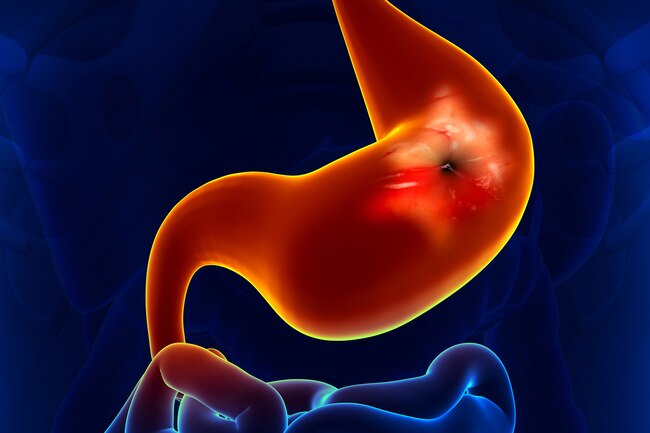
In traditional medicine, chili peppers have been used to treat an array of different digestive conditions, including indigestion, acid reflux, stomach ulcers and loss of appetite. With more than 200 natural compounds identified in these powerful peppers, they can help regulate gastric secretions, fight pathogens in the digestive tract, strengthen the defense mechanisms of the stomach and stimulate digestion.
Some research also shows that capsaicin, in particular, could help treat and prevent stomach ulcers. A review out of India noted that capsaicin can inhibit acid secretion, increase mucus secretion and promote blood flow in the stomach to help improve ulcers and wounds.
6. Could Extend Longevity

In addition to improving numerous aspects of overall health, chili peppers could potentially extend longevity and reduce the risk of mortality. In fact, according to a large study in over 16,000 people, increased consumption of hot red chili peppers was associated with a lower risk of mortality over an average of nearly 19 years.
Although it’s unclear exactly why eating peppers could help protect against death, researchers believe that it may be due to the presence of capsaicin, which may improve gut health and act as antioxidant to decrease inflammation.
Recipes

There are plenty of ways to incorporate this unique ingredient into your daily diet. Try chopping your peppers up and tossing them into soups, stews, stir-fries or scrambled eggs for an extra kick of flavor.
Chili peppers also make an excellent addition to sauces, salsas, bean salads and even burgers as well.
Need more ideas? Here are a few delicious recipes to get you started:

- Ghost Pepper Hot Sauce
- Thai Coconut Chicken Soup
- Pan-Seared Green Chili Pepper
- Chimichurri Recipe
- Spicy Beef and Pepper Stir-Fry
Risks and Side Effects

Although allergic reactions to chillie peppers are uncommon, they have been reported and may cause symptoms like hives, itching and swelling. If you experience these or any other side effects after consuming chillie peppers, discontinue use immediately and consult with your doctor.
Additionally, while many enjoy the chillie pepper’s signature spicy flavor, it can also cause a burning sensation in the mouth or skin. In fact, direct skin exposure when handling some peppers can trigger a condition known as “hot pepper hands.”

Wearing gloves is an easy way to prevent skin irritation when cutting or cooking with peppers. There are many other natural options that can absorb hot chili oil and soothe irritated skin, including rubbing the hands with sugar, dish soap, vegetable oil or milk.
Some people may also be especially sensitive to the effects of chili peppers. For these individuals, consumption could cause digestive distress, including stomach pain, diarrhea and cramps.
Spicy peppers may trigger heartburn in those with acid reflux as well.
Furthermore, research on the relationship between cancer and chili pepper consumption has turned up mixed results. While some studies have found that the capsaicin in chili peppers could block the growth and spread of cancer cells, other research has shown that an increased intake of spicy foods could be tied to a higher risk of cancer.
Therefore, more studies are needed to evaluate how chili peppers could impact cancer development.
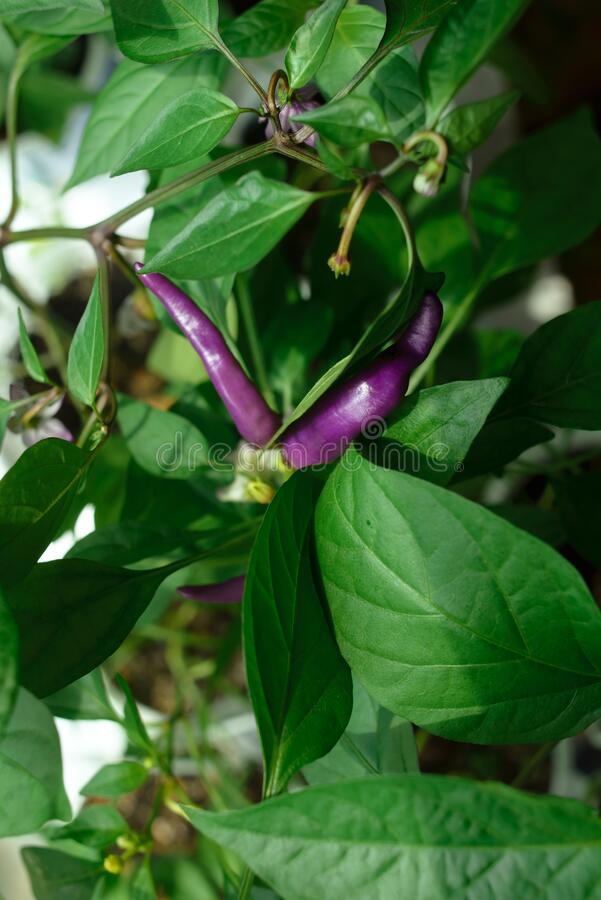
Conclusion
- Chili peppers are a type of nightshade vegetable known for their many health-boosting benefits.
- There are a number of different types of peppers available, which can range in color, size and spiciness.
- Some common chili pepper varieties include the cayenne pepper, bell pepper, serrano pepper, poblano pepper and Thai chili pepper.
- Potential chili pepper benefits include boosting fat-burning, providing pain relief, decreasing blood pressure levels and improving digestive health.
- However, chili peppers can cause skin irritation and may also trigger digestive distress or heartburn in some people. Additionally, more research is needed on the relationship between chili peppers and cancer development.

Make a difference to your garden & kitchen table.Add colourfull zezt to your life. Be a purple people eater & amaze your friends & neighbours. Medium heat. This chilli is rated at 70,000 Scoville Heat Units (SHU) where a Jalapeno pepper produces between 3,500-8,000 Scoville Heat Units (SHU)!!!……

Henry Sapiecha. I HAVE MANY OTHER CHILLIE VARIETIES-JUST ASK
Any questions or if buying, contact me HERE


